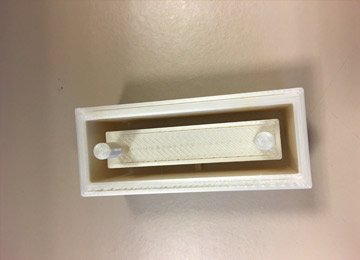Introduction
Wound healing assay is one of the earliest, cheapest and inexpensive method used to study directional cell migration. This method allows us to observe adherent cells and how they are reacting a ‘wound’ in vivo. It can be done by simply scratching the cell monolayer and observe the healing process step by step. This process allows us to understand the cell-matrix and cell-cell interactions on cell migration.
The Figure above resresents the wound healing process in 2- dimensional (2D) conventional format. Cells migrate the wounded area and it is called the ‘healing’ process.
Objectives and Device
Wound healing assays are usually performed in the conventional two-dimensional (2D) cell monolayer format. In this project it would be possible to examine the cell-cell and cell-matrix interactions in a 3-dimensional (3D) concept. Study cell polarization, matrix remodeling, estimate cell proliferation and migration rates of MCF7 cells in 3D form with the new design.
This device will allow us to analyze the migration rates of cells in 3D format. It is known that cells act differently when they are in 3D format. The mold in the figure above will be used for the experiments.

.jpg)